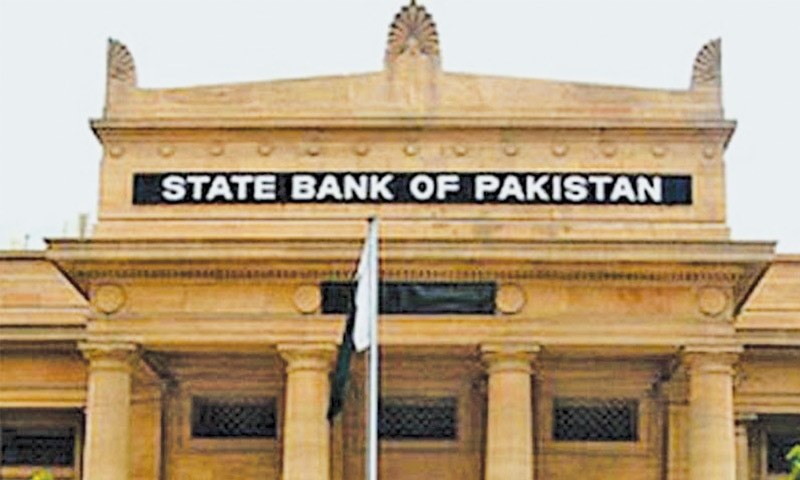KARACHI – The State Bank of Pakistan (SBP) released the Annual Report on the State of Pakistan’s Economy for the fiscal year 2023-24 today.
Pakistan’s macroeconomic conditions improved, supported by stabilization policies, successful engagement with the IMF, reduced uncertainty, and favourable global economic environment.
The increase in domestic agricultural productivity also contributed to relatively better macroeconomic outcomes during the year, the report says.
The real GDP registered a moderate agriculture-led recovery in FY24. A record harvest of wheat and rice, and a rebound in the production of cotton mainly provided boost to agricultural output during FY24. The report highlights that despite a recovery in real economic activity, the current account deficit further narrowed to a 13-year low as strong growth in remittances and exports more than offset a slight increase in imports.
This, coupled with the Stand-By Agreement with the IMF that catalysed inflows from other multilateral and bilateral sources, helped in the build-up of FX reserves and calming sentiments in the foreign exchange market. The gradual exchange rate appreciation during the year, together with higher-than-envisaged fiscal consolidation, led to a notable decline in public debt to GDP ratio in FY24.
The report notes that the SBP maintained a tight monetary policy stance by keeping the policy rate unchanged at 22 percent for almost the entire FY24. The SBP also introduced reforms in foreign exchange companies, following administrative actions by the government to bring order in foreign exchange and commodity markets. The government continued the fiscal consolidation, with the primary balance posting a surplus for the first time in 17 years.
These, together with the decline in global commodity prices amid improved global economic activity and trade, had positive bearings on key macroeconomic indicators, the report highlighted. The inflation dropped from its peak of 38 percent in May 2023 to 12.6 percent in June 2024. It averaged at 23.4 percent during FY24, considerably lower than 29.2 percent in FY23. A consistent decline in headline and core inflation in the latter half of FY24, created room for the SBP to reduce the policy rate by 150 basis points to 20.5 percent in June 2024.
The report highlights that a host of structural impediments continue to pose challenges to sustaining macroeconomic stability. Falling investment amid low savings, unfavourable business environment, lack of research & development, and low productivity, alongside climate change risks continue to constrain the economy’s growth potential.
In addition, longstanding inefficiencies in the energy sector have resulted in the accumulation of the circular debt. While the government has started to address energy sector challenges through substantial price adjustments, there is a need to broaden the scope of these efforts by introducing sectoral policy and regulatory reforms.
These reforms are also necessary to address the issue of inefficiencies in the State-owned Enterprises (SOEs) that continue to be a drain on fiscal resources, which are already constrained by low tax-to-GDP ratio.
In this backdrop, the report also includes a special chapter on ‘Reforming SOEs in Pakistan’ that sheds light on the country’s historical and current experience of SOE reforms. The chapter also suggests measures for successful reform agenda, based on international best practices. In addition to necessary focus on sectoral policy, these also include effective implementation of the recently introduced corporate government reforms, creating competitive environment, ensuring effective regulation, supported by broad political consensus, the report said.
The report highlights that the improvement in Pakistan’s macroeconomic conditions in FY24 is expected to maintain the momentum in FY25 as well. The approval of the Extended Fund Facility (EFF) program with the IMF in September 2024 is anticipated to further strengthen the country’s external account position, improve sovereign credit rating, and enhance investor confidence.
At the same time, the country is expected to benefit from a conducive global economic environment, as inflation is falling in advanced economies, while global economic growth is expected to remain steady. Moreover, while there are upside risks to global commodity prices due to rising geo-political tensions, commodity prices continue to be low. These factors would keep the current account deficit within the range of 0.0 – 1.0 percent of GDP in FY25.
The continuation of fiscal consolidation efforts and the lagged impact of tight monetary policy stance are anticipated to further weaken the inflationary pressures in FY25. Further, the recent outturns suggest the average inflation to fall below the earlier projected range of 11.5 – 13.5 percent in FY25.
In addition, the continued fiscal consolidation is also expected to support further decline in inflation. Furthermore, relatively lower borrowing cost, and a gradual recovery in LSM and services sector is projected to support real GDP growth in the range of 2.5 – 3.5 percent in FY25.










